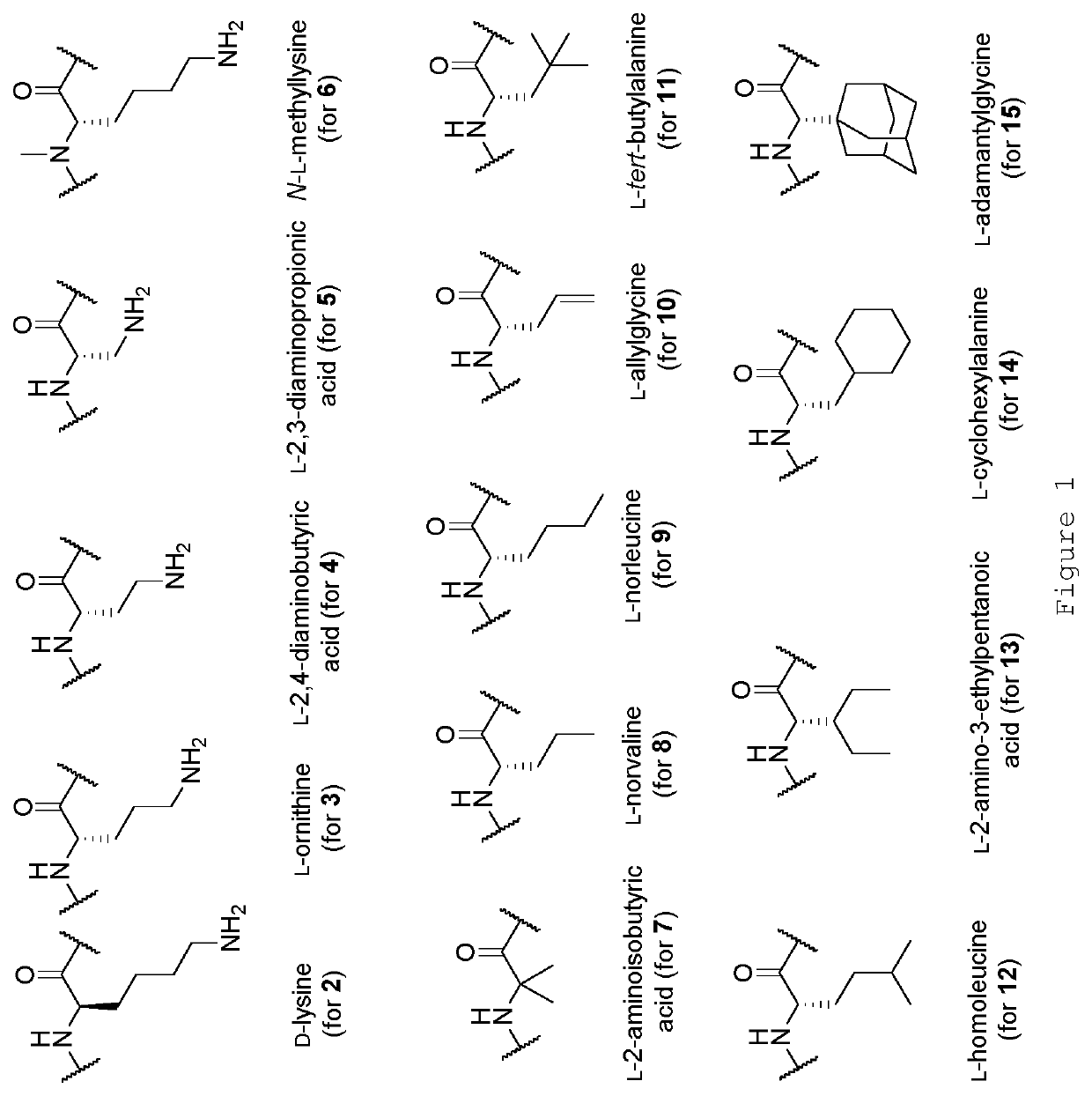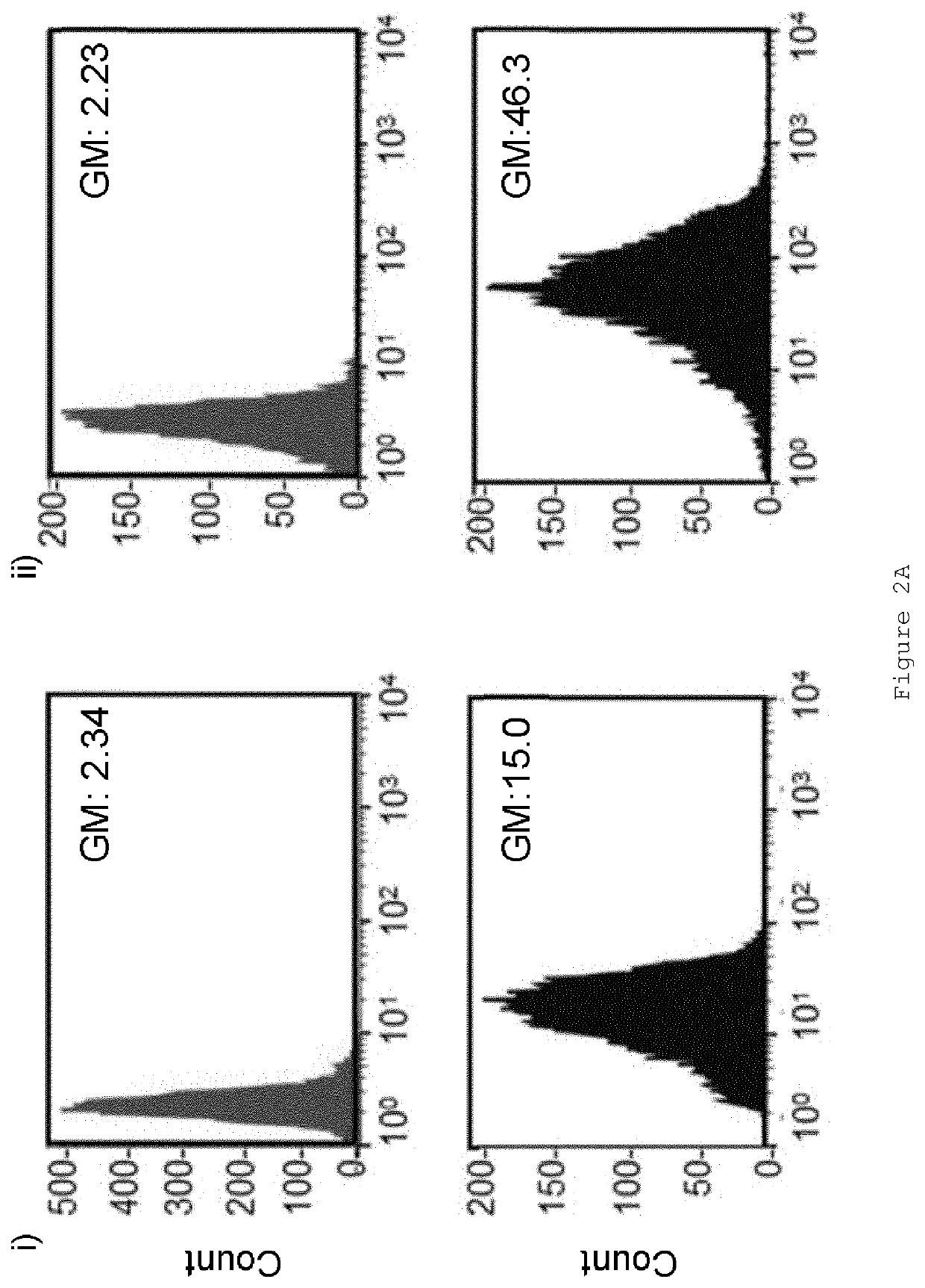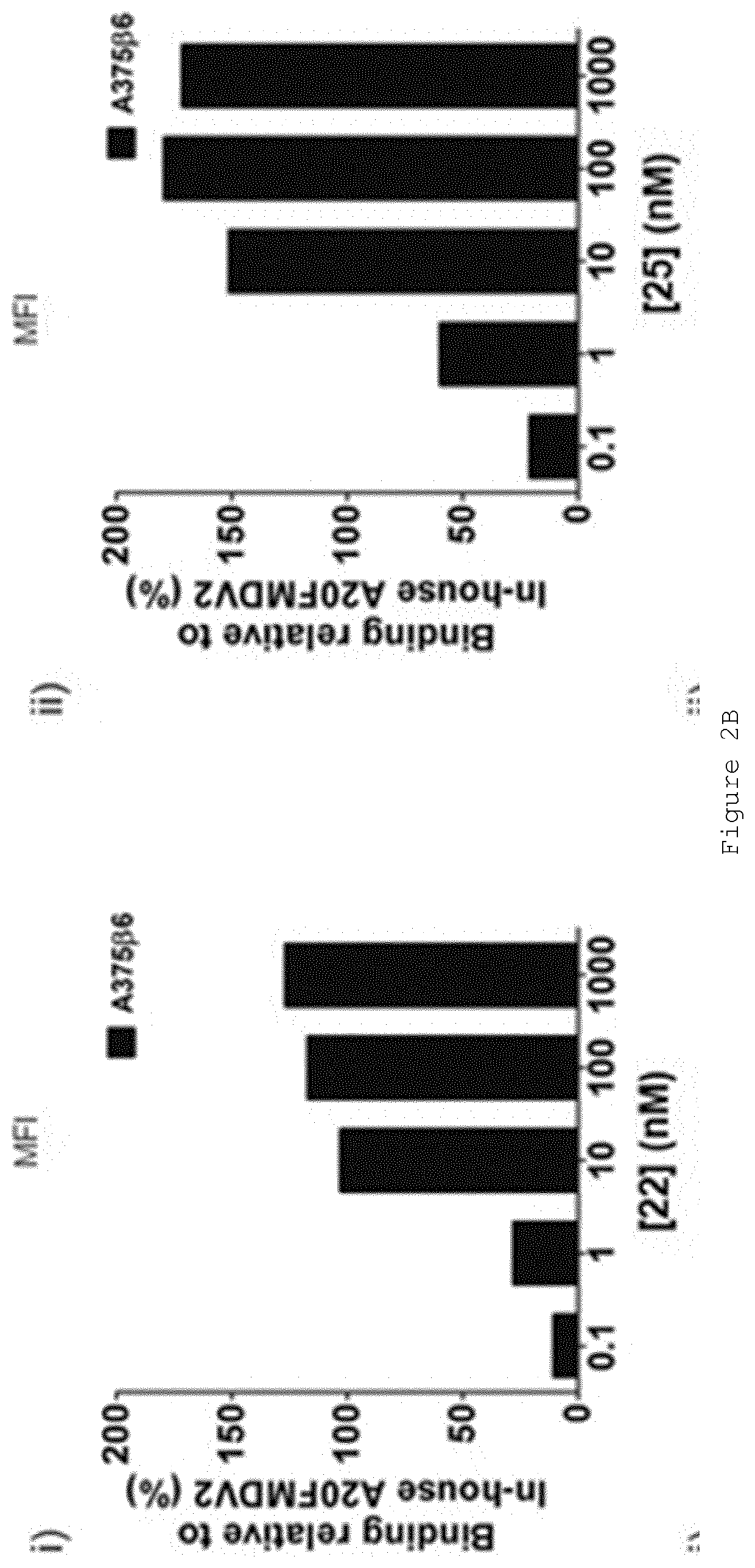Tumour-targeting peptide variants
a tumour-targeting peptide and variant technology, applied in the field of peptide variants, conjugates and pharmaceutical compositions, can solve the problems of short half-life, limited therapeutic value of a20fmdv2, and unmet needs for tumour-targeting peptides with potent binding activity, and achieve enhanced cellular uptake, enhanced bio-distribution, and enhanced binding activity.
- Summary
- Abstract
- Description
- Claims
- Application Information
AI Technical Summary
Benefits of technology
Problems solved by technology
Method used
Image
Examples
example 1
of Biotinylated A20FMDV2 1, Lys16 or Leu13-Modified and Biotinylated Peptides 2-15, N- and / or C-Terminus-Modified and Biotinylated Peptides 16-21 and (DTPA)-Containing Peptides 22-26
[0155]To enable investigation of introducing non-proteinogenic amino acids (listed in FIG. 1) on A20FMDV2 binding activity, biotinylated peptides 1-15 (see Table 1), except for peptide 6, were synthesised by standard Fmoc SPPS on the acid liable hydroxymethylphenoxypropionic acid linker (HMPP) which delivers a C-terminal carboxylic acid using to the conditions depicted in Scheme 1. The desired peptide sequences were assembled using 20% piperidine / DMF to remove the Fmoc protecting group and 0-(benzotriazol-1-yl)-N,N,N′,N′-tetramethyluronium hexafluorophosphate (HBTU) / DIPEA as coupling reagents.
[0156]Since specific binding to the αvβ6 integrin was to be studied by flow cytometry, the native alanine at the second residue in A20FMDV2 (1) and all analogues thereof, were substituted with a biotinylated lysine ...
example 2
l Activity of Peptide Variants
[0162]To test which, if any, of the peptide variants is superior to the original A20FMDV2 we designed a series of tests using two cell lines (A375Ppuro and A37546) that were genetically identical except for the expression of integrin αvβ6 in the A37546 cell lines [9]. Since A375Ppuro expresses four integrins (αvβ3, αvβ5, αvβ8 and α5β1) that also bind to RGD motifs in their ligands, comparing binding activity on these two cell lines is considered a highly stringent assay.
[0163]As an example of the assays used for characterizing the behaviour of modified peptides 1-15, 16-21 and 22-25, FIG. 2 shows a comparison between peptides 22 and 25. A20FMDV2 binds to αvβ6>1000-times more selectively than to other integrins [9]. To confirm that modified peptides retained specificity we determined how much peptide bound to A375Ppuro versus A37546 cells using flow cytometry. FIG. 2A shows that at 1000 nM neither peptide 22 (Ai) nor peptide 25 (Aii) bound to A375Ppuro (...
example 3
ability and Bio-Distribution Studies
[0170]FIG. 3 shows the stability of DTPA-conjugated peptides (22-26) in plasma (red bars; right-hand bar for each peptide) versus PBS (black bars; left-hand bar for each peptide) at 37° C., relative to a 0 minutes time point. The data show that after 24 h at 37° C. in PBS only about 10% of the peptide has degraded. In contrast, while peptides (22, 25, 26) show similar levels (77%-80%) remaining in plasma after 24 hours, there is major degradation of peptide (23) (60% remaining) and peptide (24) (52% remaining). Thus, the modifications of peptides 24 and 23 (C-terminal amidation and N-terminal acetylation, respectively) have increased susceptibility to plasma degradation relative to the control parent peptide (1). Peptide modification by chemical manipulation using D amino acids (D-Asn, compound 25, and D-Asn / D-Thr compound 26) was optimal in improving susceptibility to human plasma proteases.
[0171]Immunocompromised mice (n=3-5) bearing A375Ppuro a...
PUM
| Property | Measurement | Unit |
|---|---|---|
| Fraction | aaaaa | aaaaa |
| Current | aaaaa | aaaaa |
| Capacitance | aaaaa | aaaaa |
Abstract
Description
Claims
Application Information
 Login to View More
Login to View More - R&D
- Intellectual Property
- Life Sciences
- Materials
- Tech Scout
- Unparalleled Data Quality
- Higher Quality Content
- 60% Fewer Hallucinations
Browse by: Latest US Patents, China's latest patents, Technical Efficacy Thesaurus, Application Domain, Technology Topic, Popular Technical Reports.
© 2025 PatSnap. All rights reserved.Legal|Privacy policy|Modern Slavery Act Transparency Statement|Sitemap|About US| Contact US: help@patsnap.com



